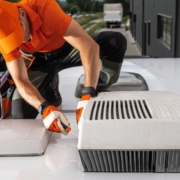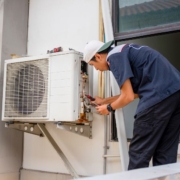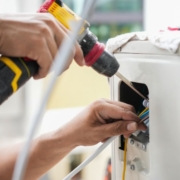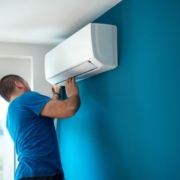Why Does My Car AC Smell
A car air conditioning (AC) system provides comfort by cooling the cabin air. When a bad smell develops, it can make driving uncomfortable and indicate underlying issues. Understanding the causes of AC odors and how to address them helps maintain a healthy and efficient system.
Common Causes of Car AC Smell
One of the most frequent causes of car AC odors is mold and mildew growth in the system. Moisture accumulates on the evaporator coil, especially when the AC is used frequently. Warm, damp conditions create an ideal environment for fungi and bacteria, which produce a musty or moldy smell.
Another common source is clogged or dirty cabin air filters. These filters trap dust, pollen, and debris, but over time, they can become saturated with moisture and organic matter, leading to unpleasant odors. Cabin air filters typically need replacement every 12,000 to 15,000 miles, depending on driving conditions and air quality.
Debris in the AC system can also cause bad smells. Leaves, twigs, or dirt can enter the air intake vents, especially when parked under trees or in dusty areas. This material can trap moisture and decompose, producing a foul odor when the AC is running.
Refrigerant leaks are another possible reason. Low refrigerant can lead to insufficient cooling, causing moisture buildup and promoting bacterial growth. While refrigerant itself is odorless, the consequences of a leak may indirectly contribute to AC smells. A certified technician should handle refrigerant inspection and refill.
Bacterial growth in the condensate drain line can also cause odors. Condensate forms as the AC cools the air, and it is typically drained outside the vehicle. If the drain line is clogged, water can accumulate in the system, creating an environment for bacteria and producing a sour or damp smell.
How to Identify the Type of AC Smell
The type of odor can indicate the underlying issue. A musty or moldy smell usually points to mold on the evaporator coil or cabin filter. A sweet or chemical smell may indicate a refrigerant leak, while a burning smell can suggest electrical issues such as a worn-out blower motor or shorted wires. Identifying the smell type helps determine the appropriate corrective action.
Steps to Eliminate AC Smell
First, inspect and replace the cabin air filter if it appears dirty or damp. Cleaning or replacing the filter can significantly improve air quality.
Next, clean the evaporator coil and AC vents. Commercial AC cleaners are available to remove mold, bacteria, and debris safely. Some products are sprayed directly into the air intake vent to sanitize the system.
Ensure the condensate drain line is clear. A clogged drain can be cleaned with compressed air or a flexible wire to allow water to flow outside the vehicle. This reduces moisture buildup and prevents bacterial growth.
Running the AC with maximum fan speed for a few minutes before shutting off the vehicle can help dry the evaporator coil and minimize moisture accumulation. This simple practice reduces the likelihood of mold and mildew growth.
For suspected refrigerant leaks, it is essential to consult a certified automotive technician. The technician can inspect for leaks, recharge the refrigerant, and ensure the system operates efficiently.
Preventive Measures
Regular maintenance is key to preventing AC odors. Replace the cabin air filter every 12,000 to 15,000 miles or as recommended by the vehicle manufacturer. Clean the air intake vents periodically to remove debris, and keep the evaporator coil dry by running the fan for a few minutes before turning off the car.
Parking in sunny, dry areas can reduce moisture buildup in the system. Avoid leaving leaves and debris on the windshield and around the air intake, as these can enter the AC system and contribute to odor formation.
FAQ
Why does my car AC smell musty?
A musty smell usually results from mold or mildew on the evaporator coil or in the cabin filter. Moist conditions inside the system allow fungi to grow.
Can a dirty cabin air filter cause AC smell?
Yes. A clogged or damp filter traps dust, pollen, and moisture, leading to unpleasant odors.
Why does my AC smell sweet or chemical?
A sweet or chemical smell may indicate a refrigerant leak. This requires professional inspection to prevent system damage.
How often should I replace the cabin air filter?
Typically, every 12,000 to 15,000 miles, but this depends on driving conditions and air quality.
Can I clean the AC vents myself?
Yes, using commercial AC cleaning sprays or mild disinfectants, but care must be taken to avoid damaging components.
Conclusion
A car AC may emit unpleasant odors due to mold and mildew, dirty cabin filters, debris, refrigerant issues, or clogged drain lines. Identifying the type of smell helps determine the cause and corrective measures. Cleaning the evaporator coil, vents, and drain line, replacing the cabin filter, and consulting a technician for refrigerant concerns can restore air quality. Regular maintenance, such as filter replacement, vent cleaning, and drying the system, prevents odors and ensures the AC operates efficiently, providing clean, comfortable air inside the vehicle.










